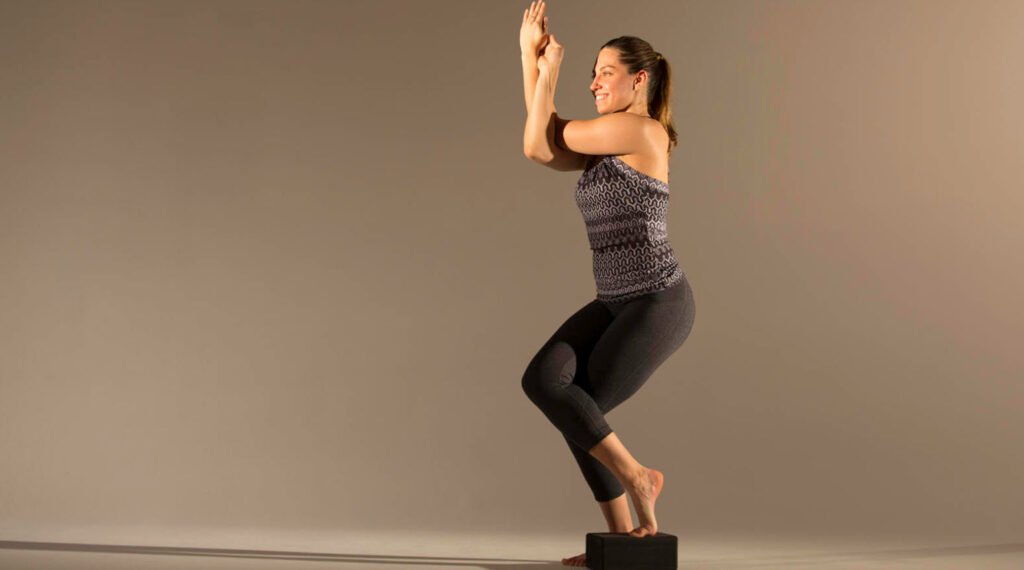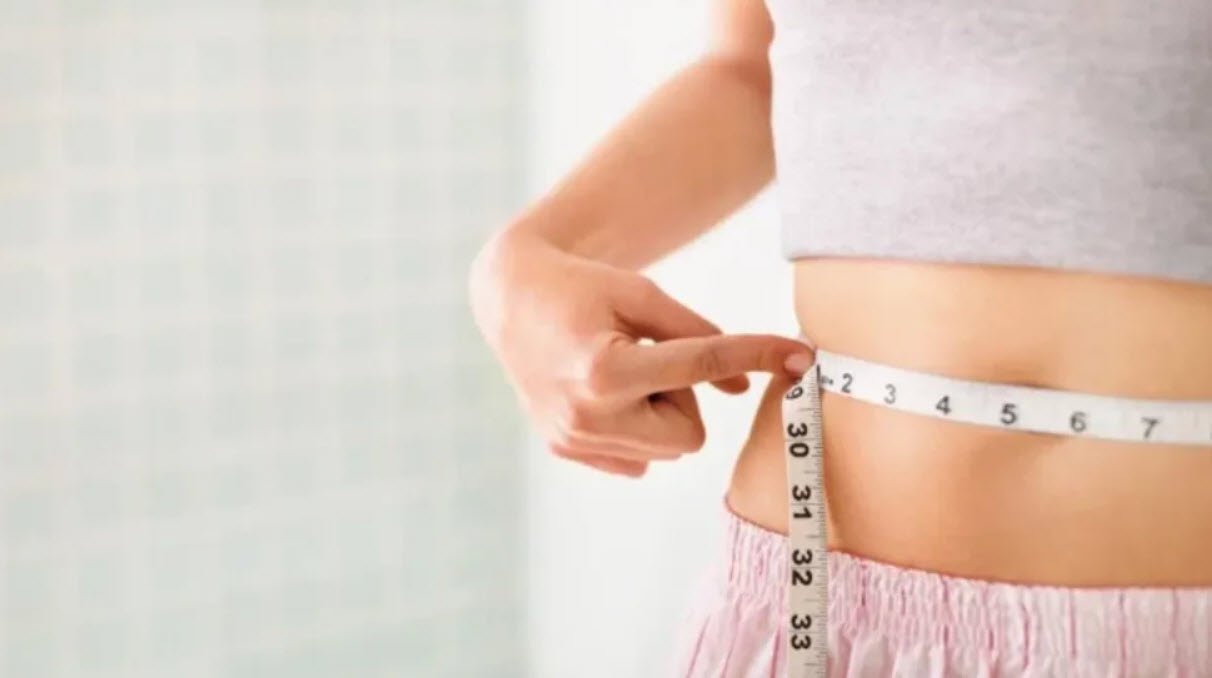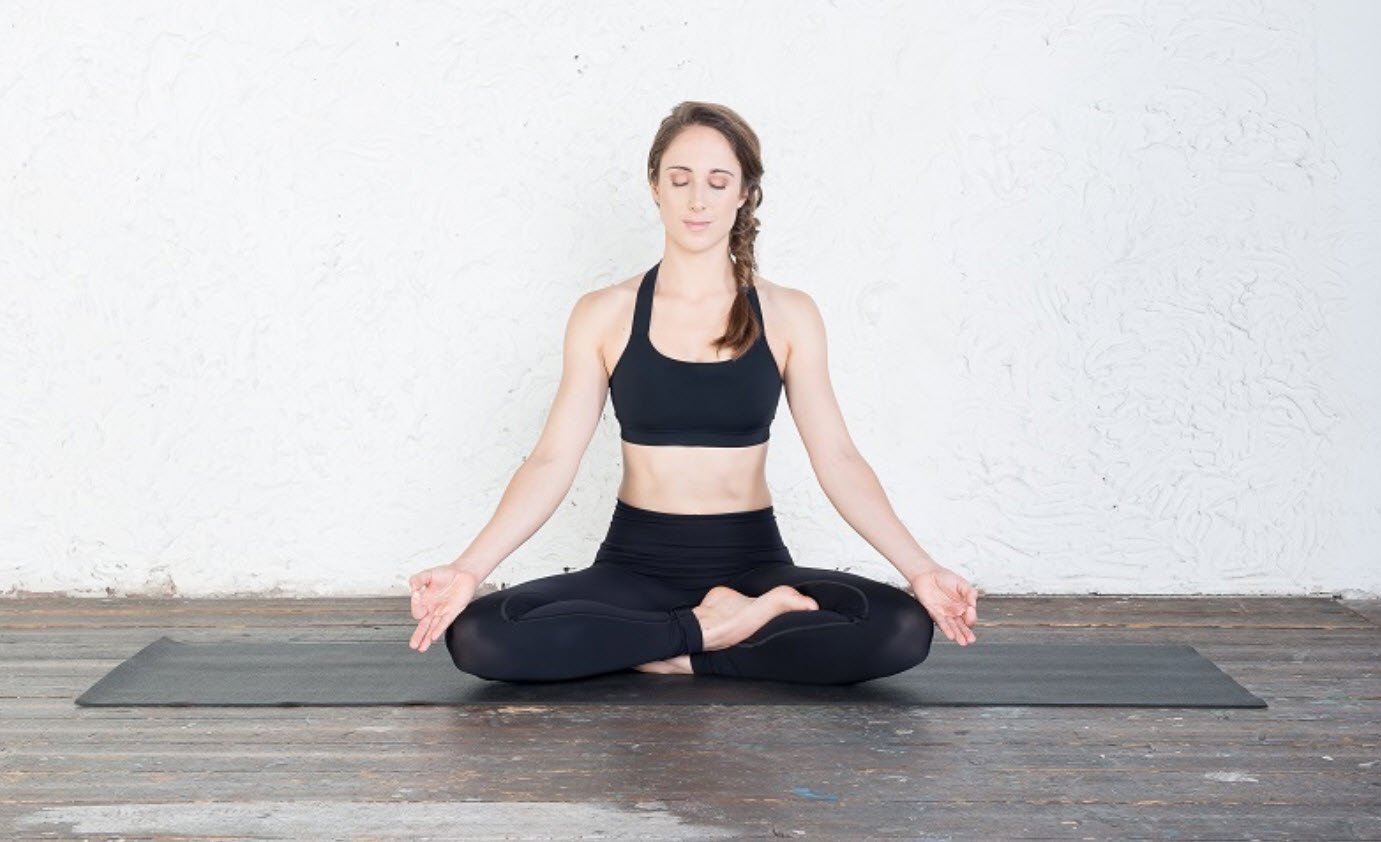
Eagle Arms is a yoga pose that targets the upper back and shoulders, providing a deep stretch to the scapular muscles. This pose helps improve shoulder mobility, increases range of motion, and reduces the risk of injury, particularly for activities involving throwing motions. Eagle Arms can be incorporated into various standing poses, making it accessible for most individuals.
Let’s explore the technique, practical benefits, and some helpful tips for performing Eagle Arms correctly.
Technique:
1. Arm Positioning: Begin by standing tall with your arms extended to the sides.
2. Cross the Arms: Swing your right arm under your left arm, allowing the elbows to bend. If possible, interlace your fingers together. If interlacing the fingers is challenging, place your right forearm against your left arm, just below the left elbow.
3. Relax the Shoulders: Focus on relaxing the shoulders down away from the ears, allowing the upper back to open.
4. Lift and Extend: Lift your crossed arms to shoulder level, ensuring that the elbows are in line with the shoulders. Press the forearms forward to deepen the stretch.
Practical Benefits:
1. Shoulder Mobility: Eagle Arms stretches the scapular muscles and promotes improved shoulder mobility. This increased range of motion allows for greater flexibility and ease of movement in the shoulders.
2. Reduced Risk of Injury: By stretching and opening the scapular muscles, Eagle Arms helps reduce the risk of injury, particularly for activities involving throwing motions. The increased flexibility and range of motion in the shoulders can enhance performance and prevent strain or discomfort.
3. Upper Back Stretch: This pose targets the upper back, providing a deep stretch that relieves tension and stiffness in the muscles surrounding the scapulae.
4. Body Awareness: Practicing Eagle Arms cultivates body awareness by encouraging proper alignment and engagement of the upper back and shoulders. It helps develop a sense of balance and symmetry in the upper body.
Tips for Proper Execution:
- Shoulder Relaxation: Pay attention to keeping the shoulders relaxed and away from the ears throughout the pose. Avoid tensing or shrugging the shoulders.
- Hands Placement: Ensure that your hands are positioned away from your face, allowing for a comfortable and secure grip.
- Adaptation: If interlacing the fingers is challenging, modify the pose by pressing the forearm against the opposite arm just below the elbow. Adjust the pose to your level of flexibility and comfort.
- Breath Awareness: Maintain a steady and controlled breath throughout the pose. Breathe deeply, allowing the breath to flow into the upper back and shoulders, enhancing the stretch and relaxation.
- Mindful Practice: Approach Eagle Arms with mindfulness, focusing on the sensations and subtle changes occurring in your upper back and shoulders. Stay present in the pose, maintaining proper form and alignment.
- Regular Practice: Incorporate Eagle Arms into your regular yoga or stretching routine to experience the cumulative benefits over time. Consistency is key for increasing flexibility and mobility.
Eagle Arms provides a rejuvenating stretch to the upper back and shoulders, offering practical benefits for shoulder mobility, injury prevention, and upper body awareness. By integrating this pose into your practice, you can enhance your overall flexibility, range of motion, and body-mind connection.
Embrace the freedom and grace of Eagle Arms, allowing it to support your journey towards improved upper body strength, shoulder stability, and mindful movement. Remember to honor your body’s limitations, practice with intention, and enjoy the revitalizing effects of this yoga pose.









This Post Has One Comment